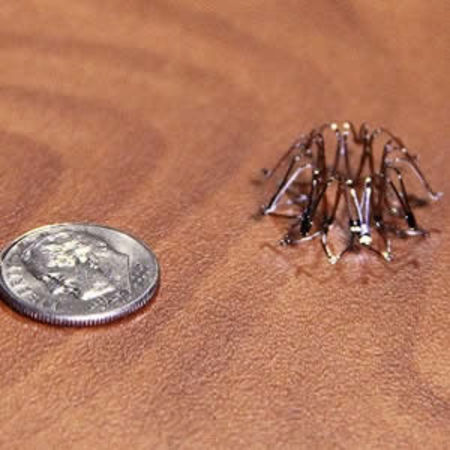Diastolic heart failure (DHF) occurs when the heart muscle becomes stiff and doesn't relax enough to allow blood to flow from the lungs into the heart, resulting in shortness of breath. Results of randomised, blinded study show that a new device – the size of a dime – designed to treat diastolic heart failure is safe and effective. The findings, presented at the American Heart Association Scientific Sessions, are also published in the journal Circulation.
"The therapies we use for people with systolic heart failure don't work as well for people with DHF. For decades, we've only been able to manage the symptoms of DHF with diuretics," explained Dr. Rami Kahwash, an advanced heart failure cardiologist and director of the Heart and Vascular Research Organisation at Ohio State Ross Heart Hospital.
Dr. Kahwash and Dr. Scott Lilly, an interventional cardiologist and director of the Structural Heart Disease Programme at Ohio State, were part of the Phase II study that evaluated the dime-size implant intended to relieve the high pressure created by blood backing up from the heart into the lungs. During a heart catheterisation, doctors inserted the tiny, interatrial shunt device in an opening they created between the upper left and right chambers. This diverts some of the blood from the high pressure left atrial chamber to the low pressure right atrial chamber, much like a detour around a traffic jam.
The study randomised 44 DHF patients at multiple centres across the U.S. The first patient in the study was enrolled at Ohio State Ross Heart Hospital, which also enrolled the most patients in the trial. The study participants received either the treatment device or a sham procedure. After one month, patients were evaluated by comparing pulmonary capillary wedge pressure (PCWP) readings during right heart catheterization exercise. Elevated PCWP readings indicate failure of the left ventricle.
Researchers reported that the interatrial shunt device reduced PCWP readings by 3.5 mmHg, compared to a reduction of 0.5 mmHg in the control group.
According to Dr. Lilly, the device represents "a novel therapy" for diastolic heart failure, a condition characterised by lifestyle-limiting breathlessness. "If the initial experience is substantiated through ongoing clinical trials, this interatrial shunt device may be an opportunity to improve quality of life and exercise capacity for patients that currently have few other options," the doctor said.
Risk factors for DHF include high blood pressure, diabetes, obesity and age. Dr. Kahwash said it's estimated that within the next five years, DHF will account for more than half of all heart failure cases, and be responsible for more hospital admissions than systolic heart failure.
Image Credit: The Ohio State University Wexner Medical Center
Latest Articles
shortness of breath, diastolic heart failure, DHF
Diastolic heart failure (DHF) occurs when the heart muscle becomes stiff and doesn't relax enough to allow blood to flow from the lungs into the heart, resulting in shortness of breath. Results of randomised, blinded study show that a new device – the siz























